< home
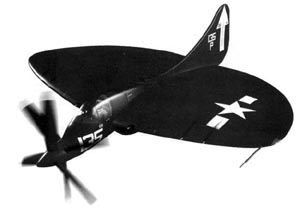 |
Boeing's WWII "Flapjacks"
1943 concepts for US Navy carrier-based fighters with short takeoff and landing performance
In the Spring of 1943 Boeing produced a number of design studies for naval fighters that were built around a powerplant consisting of a massive Pratt & Whitney R-4360 28-cylinder air-cooled radial engine of over 3,000 hp driving counter-rotating three-blade propellers. One design evolution of these concepts, the Model 400, led to a US Navy contract that May for a very large multi-role fighter of conventional configuration, the XF8B-1.
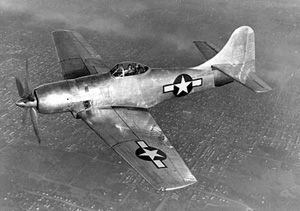 |
XF8B-1
|
During the course of these fighter studies, Boeing had produced the Model 390, a completely different configuration that appears to have been targeted as a direct competitor of the interesting USN/Vought XF5U-1 "Flying Flapjack," which was reaching the mockup review stage at the time. The Vought plane was intended to have very short takeoff and landing performance (thanks to the high angle of attack attributes of its elliptical wing) combined with high top speed. It's also worth noting that at the time, the Navy's most capable operational fighter, the Vought Corsair, had been banned from carrier operations due largely to the inability of Corsair pilots to see over the plane's long nose during the last stages of the landing approach. Both the Vought and Boeing Flapjack designs solved this problem with a vengeance by placing the pilot in a small pod projecting well ahead of the wing, which in both cases was of very unusual low aspect-ratio planform.
Both designs also used unusual powerplant layouts that required gearboxes and shafts to drive their propellers. The Boeing concept was relatively simpler mechanically than the Vought project, having its engine situated at the plane's center of gravity and a single driveshaft linked to a gearbox for the contra-props at the nose. The Vought plane used two smaller engines which were connected to huge propellers via a hypercomplex transmission system that had two-speed gearboxes for low and high-speed regimes, and an interconnection shaft and clutches that would drive both propellers in the event of loss of one engine. Additionally, the XF5U-1's propellers had some of the mechanical systems of helicopter rotors to provide control in the near-hover speed range. On the other hand, the fully evolved Vought F5U would have had near-helicopter-like takeoff and landing capability, justifying the additional mechanical systems.
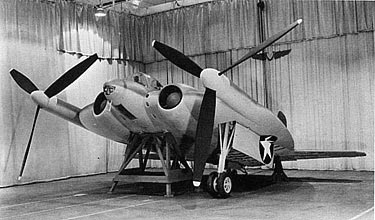 |
Chance Vought XF5U-1 mockup, July 1943 |
Estimated top speed of the Boeing 390 was about 425 mph. The more powerful Model 391, with a two-stage supercharged R-4360 rated at nearly 3,500 hp, would have had a calculated top speed of 452 mph in level flight. Engine exhaust gases, which contained considerable energy, would have been channeled into a special ejector system beneath the engine to provide a significant amount of jet thrust. Armament was four 20mm cannons.
Digital renderings by Jared Zichek, based on Boeing original documents.

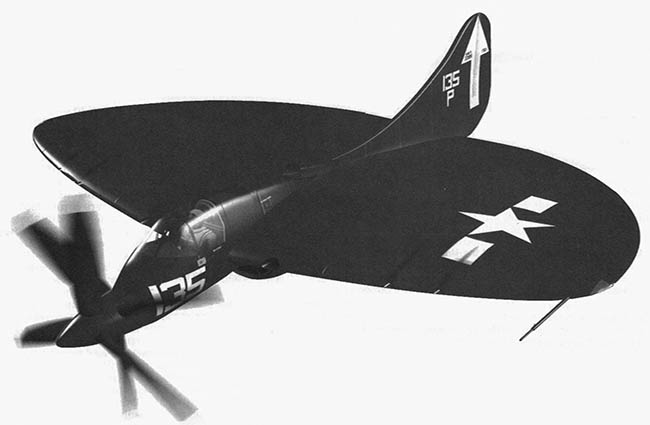
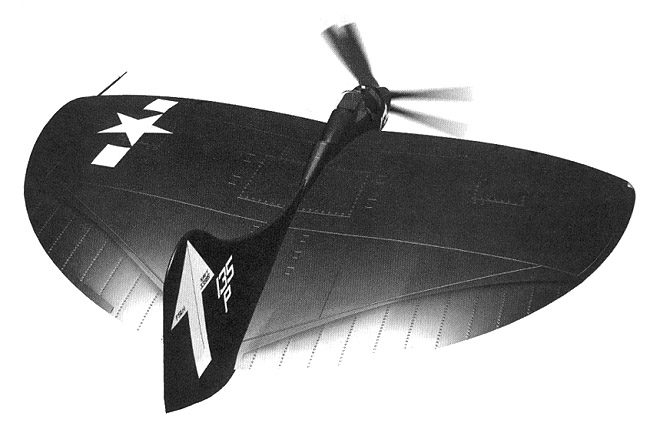
A flying technology demonstrator for the radical fighter was proposed as the Model 396. It would have replicated the shape and size of the fighter, but would have had a very low-power engine sufficient to explore only the low-speed characteristics of the elliptical planform wing. This design was a close counterpart of the Vought V-173 "Zimmer Skimmer."
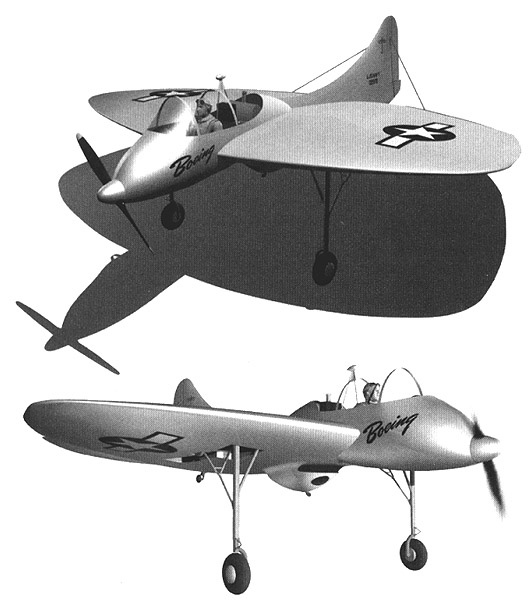
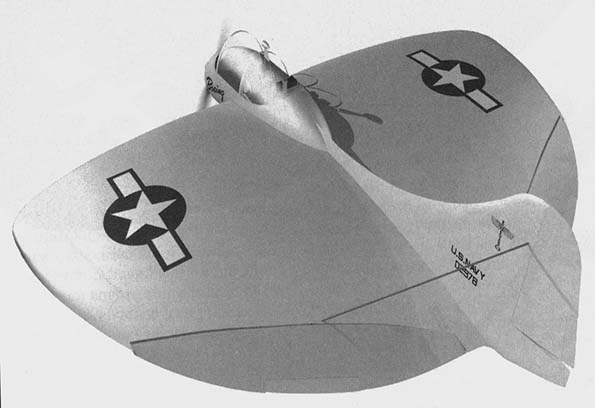
Sources
Special thanks to Jared Zichek for permission to reproduce his renderings from his article on the Boeing Flapjacks in Aipower, Volume 32 No. 4, July 2002